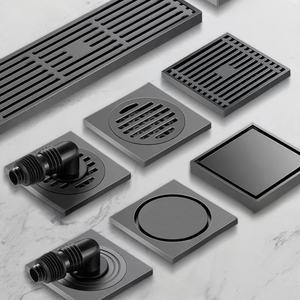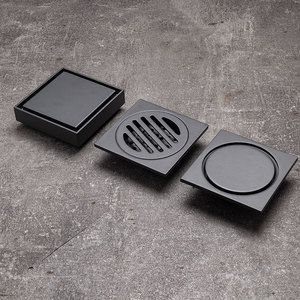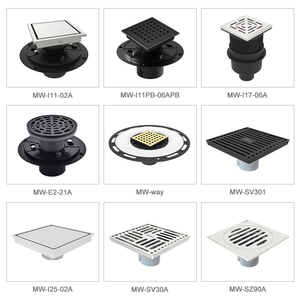
All categories
Featured selections
Trade Assurance
Buyer Central
Help Center
Get the app
Become a supplier

(942 products available)









































An under sink drain pipe is a plumbing pipe connected to the sink to help in the drainage of water. Under sink drain pipes are also known as waste pipes or trap pipes. They are crucial to any sink system as they ensure used water is properly drained from the sink to the sewer. These pipes are usually made of plastic or metal and can come in various sizes and shapes depending on the type of sink and the specific requirements of the plumbing system. Drain pipes are indispensable for any sink as they are essential for draining water safely. They also prevent dangerous sewage from coming back up the sink. The pipes are crucial for any home or commercial space and must be repaired or replaced when damaged to ensure proper functionality. An under-sink pipe for the bathroom may differ from one used in the kitchen, as the former is more straightforward and not as bulky as that used in the kitchen.
Drain pipes under a sink can be classified into various types based on material, configuration, and design. Each type comes with pros and cons, which must be weighed before selection.
P-trap
The P-trap is the most popular sink drain pipe configuration due to its S-like shape. Its shape is due to the two curves that form a P when viewed from the side. It is usually mounted just below the sink and serves as a trap for water. The P-trap is essential for any home and provides numerous benefits, like preventing unwanted smells from coming back through the sink. It also holds a small amount of water, which creates a seal that prevents gases from escaping through the sink. This trap is popular for its simple design, which makes it easy to clean and unclog in case of any issues.
Bathroom sink drain pipes
These are straight and simple pipes used to connect the sink to the drainage. They are usually made of chrome-plated brass or PVC, offering a clean look that complements the sink design. These pipes are easy to install and maintain and are usually smaller in diameter than kitchen sink pipes due to less dirty water being drained.
U-bend or U-trap
This type of pipe is similar to the P-trap and is S-shaped. It is usually made of metal and is popular in older homes. The U-bend trap works similarly to the P-bend, creating a water seal that prevents sewer gases from coming up through the sink.
Bottle trap
A bottle trap is a popular type of sink trap that offers a sleek and compact design. It is usually mounted outside the sink and has the appearance of a cylindrical bottle. It is popular in modern bathrooms and offers easy access for maintenance and cleaning.
Condenser trap
This type of sink trap is used in specific applications, like when sinks are connected to a wall. It is usually made of metal and has a large condensation chamber that collects grease and fat. This makes it a popular choice in commercial kitchens.
Understanding the functions and features of a bathroom sink pipe under can help homeowners maintain and properly manage the plumbing system under their sink.
Waste Water Disposal
One of the vital functions of drain pipes under sinks is to dispose of wastewater from sinks into the municipal sewer system. These pipes are connected to the city sewer system, which allows wastewater to flow and be managed efficiently.
Ventilation
These pipes are also essential for ventilation. They allow for the proper ventilation of wastewater as it flows through the pipes. This is important because it regulates atmospheric pressure in the plumbing system, allowing water to flow freely without any obstruction. The sink drain pipe under also has a vent connection that connects to the main vent stack, usually located on the roof of the house.
Trap Containment
Sink drain pipes also contain traps that prevent harmful gases from entering the house. The trap, usually in a U shape, holds a small amount of water that acts as a seal, stopping sewer gases from coming back into the house. This is vital for the protection and safety of homeowners.
Leak Prevention
Another function of the drain pipe under the sink is to prevent leaks. The plumbing system is designed to prevent leaks and ensure water flows efficiently. However, sometimes, due to wear or damage, leaks can occur. If a leak happens, the drain pipes are connected to the cabinet, which will help contain the water and prevent it from damaging other parts of the house.
Disconnection and Reconnections
The sink drain pipes are usually connected using threaded connections, slip-joint connections, or compression fittings. These connections allow the pipes to be easily disconnected for maintenance, repairs, or replacement and reconnected once the process is complete. This feature makes plumbing versatile and easy to manage.
Material
Sink drain pipes are built with materials that do not corrode or rust easily. These materials are usually metal and plastic. The most common type of metal used is stainless steel and chrome. They are popular because they can easily be adapted to different plumbing systems. Plastic pipes, like PVC and ABS, are also popular and widely used because of their lightweight nature and low cost. These materials are durable and can withstand different temperatures.
Diameter
The diameter of these pipes is usually between 1.25 and 1.5 inches. This size is good for the effective drainage of wastewater from sinks. Sinks are designed to accommodate this size pipe, which makes it efficient for water to flow through.
There are multiple applications for drain pipes underneath sinks. Different industries install and use these pipes in various ways. This includes:
When choosing an under-sink drain pipe, it is important to consider various factors to ensure the right selection. This section is going to highlight and discuss the different factors to be considered when choosing a sink drain pipe.
Material Longevity and Durability
In this case, the buyer has to consider the durability of the drain pipe material. Materials like PVC are known for their durability and longevity, which makes them suitable for different types and sizes of sinks.
Compatibility and Size
Another important factor to consider is the size of the drain pipe. It is important to choose a drain pipe that is compatible with the size of the sink. This will ensure that it is correctly installed and also provide effective drainage. These pipes come in different sizes, and as such, it is important to choose one that is compatible with the sink and also eliminate any leakage issues.
Easy Installation and Maintenance
It is important to choose a drain pipe that is easy to install and maintain. This is because some pipes require different types of tools for installation, which can be expensive for a homeowner. Choosing a drain pipe that is easily maintained and installed is important as it will also eliminate extra expenses. One can choose a sink drain pipe that comes with simple installation features like slip joints and washers.
Leakage Prevention
Leakage is a common problem with sink drainage systems, and it is important to ensure that the under-sink drain pipe is leakproof. This is because leaks can cause water damage and even mold growth. Choosing a pipe that has slip joints and washers will provide a tight connection and eliminate leaks.
Pipe Configuration and Shape
It is also important to consider the pipe configuration and shape. Different types of pipes are offered in the market with different shapes and configurations. It is important to choose a pipe that will fit in the available space under the sink. For instance, P-trap pipes are suitable for sinks that are installed in tight spaces.
Q: What kinds of pipes are usually found under sinks?
A: PVC is the most common sink pipe material because it is light and rustproof. In sinks, toilets, and baths, white plastic pipes are frequently used. ABS, a type of black plastic, is also used for pipes beneath sinks. It is more durable and robust than PVC. Metal pipes are also used under sinks. They are heavy but very durable. Chrome and stainless steel are the most popular metal pipes because they have a nice finish.
Q: What is the pipe called that is under the sink?
A: The pipe that is usually found underneath sinks is known as the P-trap. It has a U shape and is located beneath the sink. The P-trap is an essential part of the plumbing system.
Q: What are the pipes called that connect to the sink?
A: Water supply lines are the pipes that connect to the sink. They are responsible for bringing water to the faucet. There are two types of supply lines: hot and cold. Hot water supply lines are usually colored in red or orange, while cold water lines are blue or stainless steel. These pipes are made of different materials, such as braided nylon, copper, or plastic.
Q: How long do drain pipes under sinks last?
A: The lifespan of under-sink pipes can vary depending on the material used. PVC pipes can last anywhere from 25 to 40 years. ABS pipes have a similar lifespan of 30 to 40 years. Metal pipes can last up to 50 years. However, this depends on whether they are exposed to moisture. Under-sink pipes can last a long time if no leaks or issues arise.